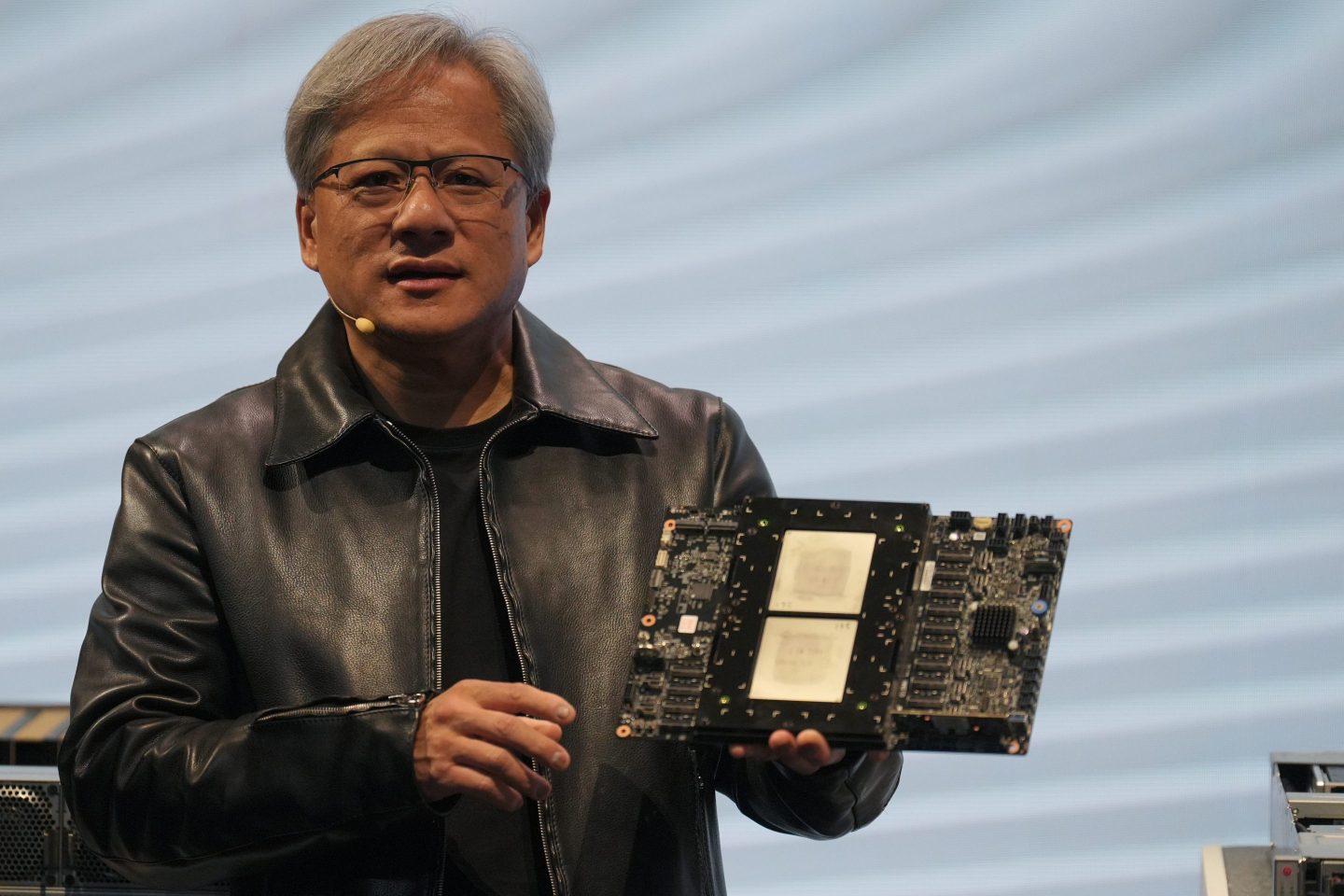Semiconductor giant Nvidia became the most valuable company in the world this week thanks to smart moves it made years ago that set it up to corner the AI chips market.
Long before it was at the top of the corporate world, Nvidia was a fledgling startup first conceived of in a Denny’s booth by CEO Jensen Huang with cofounders Chris Malachowsky and Curtis Priem. Shortly after it was founded in 1993, the company invented one of the first GPUs, or graphics processing units, originally for use in video games and graphic design.
Since then, the company has upped its ambitions and grown into its name, which is a play on the latin word for envy, by humbling tech giants like Apple, Microsoft, and Google with its $3.34 trillion market cap—which has more than doubled since January. But how did it get here? The key to its success, analysts told Fortune, started decades ago with its early preparation for the AI frenzy now sweeping markets.
CPUs, the most common computer chips which date back to the 1950s, are great for executing complex calculations one at a time, but they didn’t quite fit the needs of data scientists when deep learning and AI research intensified in the 2010s. Nvidia’s GPUs, by contrast, were a perfect fit for AI because they could perform many simple calculations at once. In 2012, Ilya Sutskever, OpenAI’s former chief scientist and the cofounder of AI startup Safe Superintelligence, was already using Nvidia chips for an early convolutional neural network called AlexNet.
Nvidia’s chips have progressed rapidly in recent years, and its GH200 Grace Hopper Superchip released last August can now perform 200 quintillion (200 followed by 18 zeros) calculations per second.
But Nvidia was only able to corner the market on AI thanks to timely bets made by CEO Jensen Huang years earlier, Baird semiconductors senior research analyst Tristan Gerra told Fortune. One of its prescient moves included creating CUDA, a high-level programming tool the company built in 2007 to help unlock the full capability of its GPUs in a straightforward way.
“Jensen, Nvidia’s co-founder and CEO, is a visionary and saw the trends of GPU adoption in data centers early on and aligned the company’s strategy to that vision,” Gerra said.
CUDA is now so widely used that it’s difficult for companies building large language models like OpenAI’s ChatGPT to imagine themselves using other tech, added John Abbott, an infrastructure analyst with 451 Research, which is part of S&P Global Market Intelligence.
“Large models can take months to train, and massive clusters are required to shorten that time. Because mature software tools—and the skills needed to use them—are readily available for Nvidia GPUs, there has really been no other choice. Nvidia GPUs have become a de-facto standard,” Abbot said in an email.
Apart from its early-mover advantage, Gerra said the company has a technological leg up as well.
“Nvidia provides a full supercomputer solution, including the highest-performance hardware (chips) and software suite. The competition offers AI chips only,” said Gerra.
Still, Nvidia faces several threats to its dominant position in AI chips, warned Abbot. Although Nvidia controls about 90% of the AI chips market, some big tech competitors such as Meta and Google have started producing in-house chips to compete.
The company also faces geopolitical obstacles in China. The U.S. is restricting Nvidia’s ability to expand in the country, and China’s government is trying hard to create an alternative to the company’s products. The threat of war could also upend the company’s business.
“Taiwan—from where NVIDIA sources all of its GPUs at the moment—is under political threat. Ongoing supply chain issues are also a big risk,” said Abbot.
Yet, for now, Nvidia is still riding high. Shares of the company have skyrocketed so much that the company instituted a 10-for-1 stock split earlier this month. Its gains have accounted for a third of the total value added to the S&P 500 since January.

